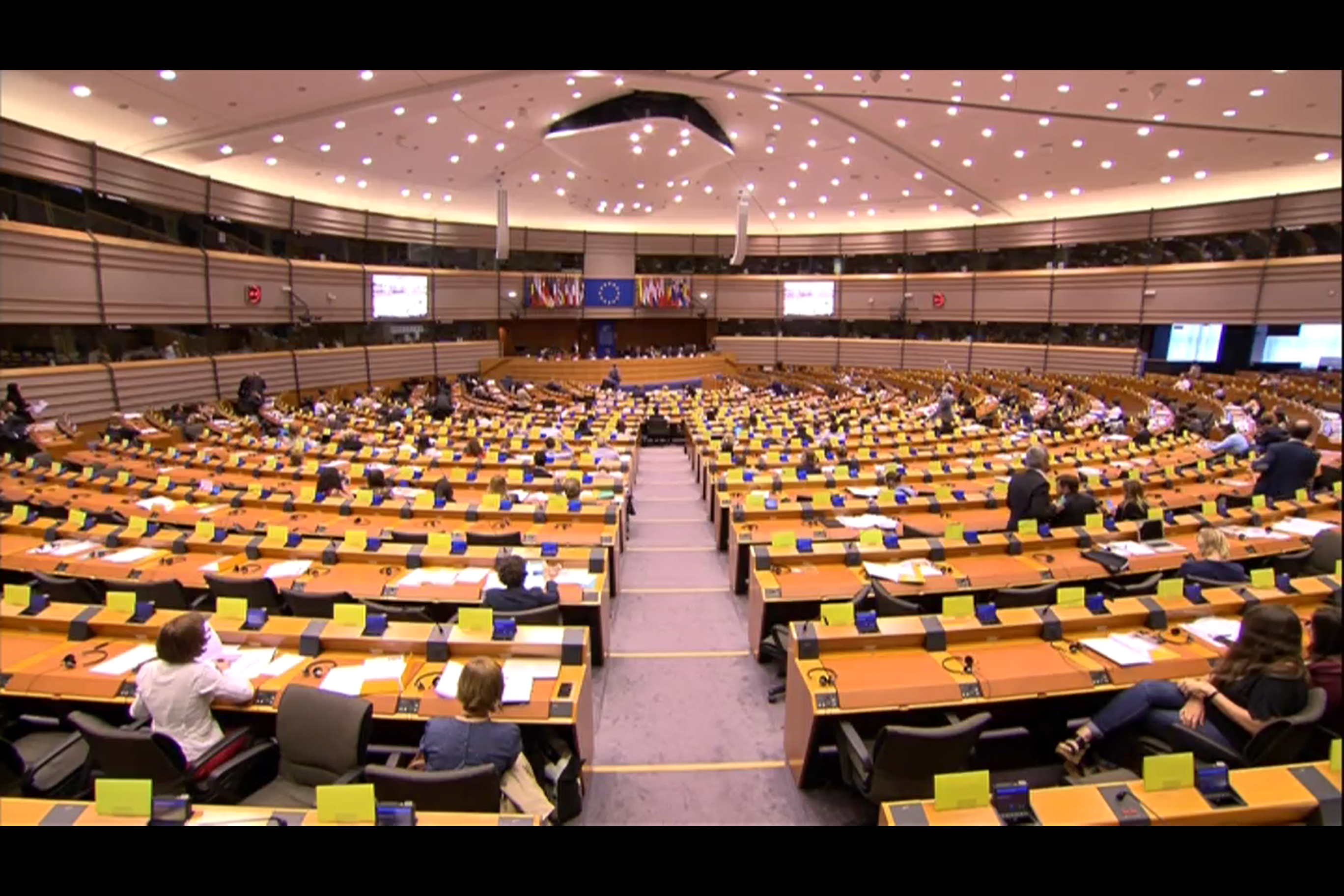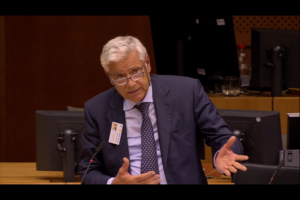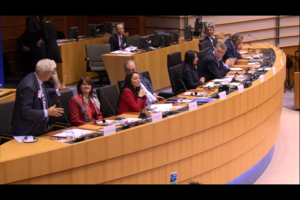
15Sep
Linking past and future. Discourse of prof. Luigi Fusco Girard
Prof. Luigi Fusco Girard, CLIC Scientific Coordinator, has been invited to talk at the High-level European Parliament Conference the 26th of June 2018 “Cultural heritage in Europe: linking past and future”, on the future of European cultural heritage.
High-level European Parliament Conference “Cultural heritage in Europe: linking past and future”- 26 June 2018 | Hemicycle of the European Parliament, Brussels
This event is about “Cultural Heritage in Europe: linking past and future”.
For which goals/objectives should we link past and future?
- For increasing tourism activities (with all interdependences)?
- For increasing the localization of new creative industries in cultural districts?
- For improving the wellbeing/well-living of inhabitants?
Which are the development processes that we are interested in?
Those related to sustainable tourism and cultural tourism, those related to creative activities and innovation. We are interested in the processes related to local development that enhance wellbeing, quality of life, well-living of communities.
But we are interested first of all to contribute to the HUMANIZATION of our cities/territories. This is foreseen in §26 of the New Urban Agenda of United Nations. This is the real challenge of our times in which the de-humanization is growing in our cities and territories.
With the CLIC project we aim to contribute to the “paradigm-shift” proposed in the United Nations Agenda 2030 for Sustainable Development (through Sustainable Development Goals) and in New Urban Agenda, towards the “humanization” of our cities (see paragraph 26). This is the real challenge of our time. In my opinion, this means in particular to contribute to:
- Regenerate the “connective infrastructure” of our city/society, going beyond the hyper-individualism and embracing interdependencies
- Regenerate community bonds, through regenerating the collective memory
- To help subject to move from I to US: to cooperate each other
The 2020 CLIC project is focused on the relationship between the adaptive reuse of cultural heritage and the processes of local sustainable development. This project has been funded by the European Commission under the Horizon 2020 Framework for Research and Innovation.
How do we think to realize this contribution? Enhancing and regenerating the “connective infrastructure” of our society through the strengthening, the celebration of our cultural memory. Thus, going beyond the production of economic wealth and trying to produce value also in the symbolic, cultural, spiritual dimension.
The CLIC project identifies three main fundamental reference points:
- Circular Economy
- Circular Cities and Regions
- Adaptive Reuse of Cultural Heritage
The Circular Economy is the co-evolutive economy, the economy of synergies, cooperation, collaboration, which is put in relationship with the circular city model and with cultural heritage, that have not been put in relationship before.
The CLIC research project I coordinate in Naples, at the Institute for Research on Innovation and Services for Development of the National Research Council, puts together three different elements:
- The circular economy approach
- The circular city model
- The adaptive reuse of cultural heritage
in a triangle of reciprocal interdependence for linking past and future through the functional reuse of cultural heritage.
- Circular economy: is the economy of natural bio eco/system that reduces entropy, increases resilience and stimulates cooperation between components (it starts from the search of efficiency, but it is based and it stimulates cooperation / synergies). It is the economy of co-evolution, co-operation, co-ordination of actions for a common interest
- Circular city: it is the concept of city as a living complex dynamic circular system, cities able to self-organize, self-manage, self-govern themselves
- Cultural Heritage: it is the memory itself of the urban living system; it is the heart of the city, its identity conserved over the centuries
In which way we intend to create these relationships? Through the elaboration of innovative business, financing and governance models able to put together, in a reciprocal and circular flow of benefit, the three main players:
- The private sector, both the entrepreneurs and the owners
- The public sector
- The local community
So, the CLIC project is focused on the interdependence of these three components for the identification of:
- New business models
- New financing models
- New governance tools
for implementing the adaptive reuse of cultural heritage.
Solutions will be characterized by the search of “positive sum strategies” in which each of the players:
- Private owners
- Private entrepreneurs
- Public bodies
- Local communities
can gain reciprocal benefits, through win-win-win partnerships, agreements, pacts in which the tangible impacts are integrated with intangible ones (symbolic, cultural, spiritual).
But there is a problem.
We have often evoked here the local community. However, the truth is that local communities are more and more fragmented, atomized under the pressure of growing selfishnesses.
We can see it in the associations, in politic parties, and in labor unions. We try to reduce this weakness, but too often the particular interests succeed over the common good of the city and society, over the general interest.
There is a growing risk of “entropy” crisis, very dangerous because it comes from inside and it is linked to the loss of sense and meaning, and direction that a society shall have.In the same time, we recognize the growing role/importance of the local community. But we experiment each day the increasing weakness of the “connective infrastructure” of our society and cities, because of the growing fragmentation/atomisation of our society under the pressure of a growing individualistic culture, for example:
- In political parties
- In Associations
- In Labor Unions
More and more we see that particular interests are winning over the general city/society interest.
There is a serious risk also for sustaining by bottom up all new methods of governance, business, financing.
This opens an issue. That is not only a technical one (regarding participation processes, public arenas processes…) but it is a cultural issue that involves schools, mass media institutions, communication bodies, and not only Academia/Research institutions.
The new European Agenda for Culture (2018) invites us to new coordination efforts towards this “integrated cultural project”.
The conservation of cultural heritage is a high formative exercise of critical knowledge because it obliges to distinguish, to put in relationships, to compare and then to prioritize. It can contribute to promote this cultural project.The CLIC ambition is to be useful also in this socio-cultural perspective, regenerating not only economic tourism, wealth, values, a creating innovative activities – wellbeing conditions, helping the city mayors in their development strategies, but also the immaterial civic infrastructure of our cities for regenerating communities (the Heritage Community of the FARO Convention) through social memory celebration, cooperative values, responsibility, civic consciousness, public mindset.
New uses able to promote in the best way the “connective infrastructure” of our cities should be identified, taking into account the coherence of new use values with the “intrinsic” value of cultural heritage. These new uses are extremely important to regenerate the general conditions of economic development, as the economist Antonio Genovesi already suggested in his “Lessons of Civil Economy” (1765).
We think to link the research to what is useful and necessary for regional and local governments to contribute through cultural heritage to these processes of regeneration and development.
We find fundamental to regenerate the civil knowledge and wisdom, the “civic responsibility”. “Civic Responsibility” is another principle evoked in the New Urban Agenda.
CLIC, together with some other H2020 researches, aims to demonstrate, through empirical evidence, the potential value of cultural heritage/landscape in the circular city model in terms of connections between:
- Memory and future
- Conservation and economic development
- Short time and long time horizon for decision making processes
- Instrumental values and “independent of use” values (“intrinsic values”)
- Traditional and new technologies
- Needs of this generation and needs of future generations
- Inhabitants and places
- Public and private interest
- Scientific specialized knowledge and humanistic knowledge
- Creativity and responsibility
- The historic center and the city territory
- Cultural capital and natural capital
and how this potential can be concretely implemented towards closing the gap within the desirable (“humanistic”) vision and the status quo conditions – thus becoming useful for different decision makers.
The objective is to contribute to the regeneration of the European “connective infrastructure” that is more and more fragmented, through the creation of “heritage communities”.
Luigi Fusco Girard


